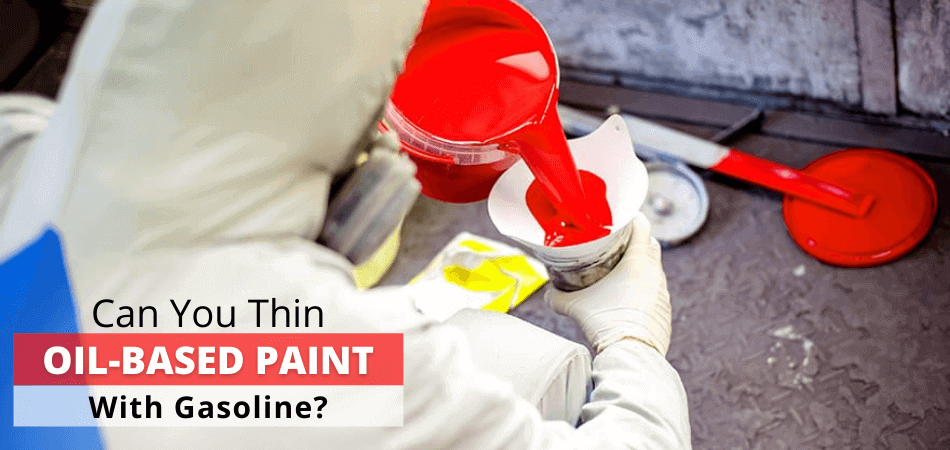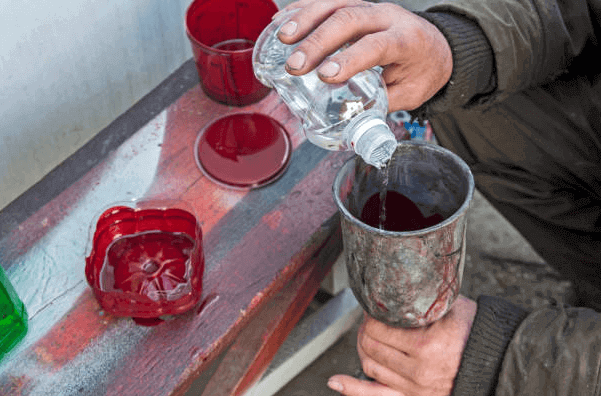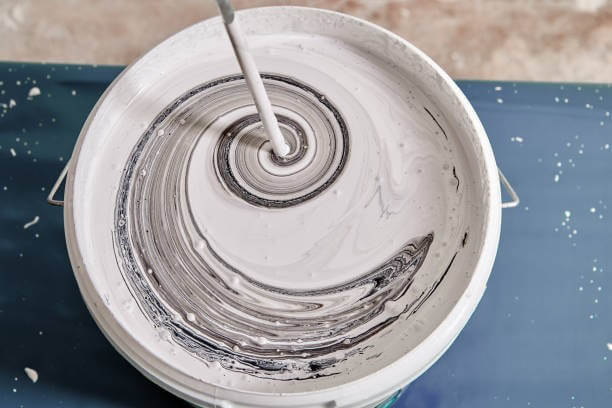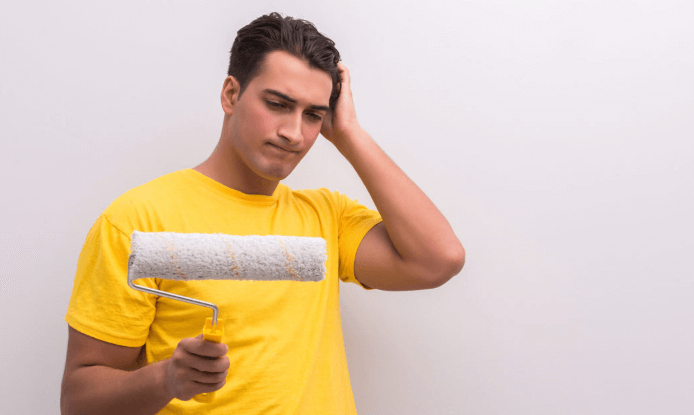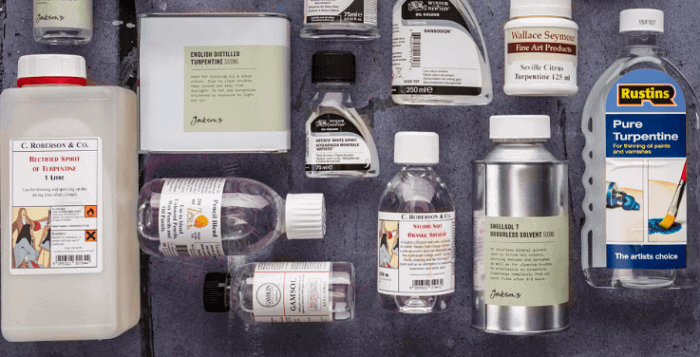Being a professional painter, James never limits himself to his job only. He wants to utilize his decade of painting experience by helping people who...Read more
For the best thinning result with oil-based paint, you need to use substances such as turpentine, acetone, or mineral spirits. But what if those materials are not available, but you have gasoline handy? Can you thin oil-based paint with gasoline?
Gasoline will give your oil-based paint a fine thinning and can be used. However, gasoline has some properties that make it considerably unsafe as a thinner for your oil-based paint. Continue reading this article to learn more.
Contents
Can You Thin Oil-Based Paint With Gasoline?
You’re probably looking forward to thinning your oil-based paint with something other than the conventional turpentine thinner. In that case, there are many available options, such as citrus solvents, gamsol, or lavender spike oil.
In the case where you consider using gasoline as a thinner for your oil-based paint, here’s what we have to say. Gasoline will do a fine thinning job to your oil-based paint and will result in very flexible paint.
Why Do Your Oil-Based Paints Need Thinners?
For several decades, oil-based paints and primers have been the standard for many industries. In contrast to latex paints, oil-based paints provide better penetration into surfaces, have better leveling, and are always dry to a finer finish. Furthermore, these paints offer high resistance to scrapes and scuffs, are highly durable, and have good adhesion to surfaces and gloss. So why do these paints need thinners?
- Oil-based paints are usually thicker and, as a result, dries slower than other paints. Their high density makes them difficult to wash off brushes and surfaces after drying. On the other hand, Latex paints can be washed with soap and water, while an oil solvent is needed for oil paints. That’s why we have thinners coming into the picture.
- Thinners are solvents that are capable of dissolving paints and reducing their viscosity. The thinning name comes from its use in dissolving paint used for sprayer application. Thinning makes the paint have a better leveling and finish on walls.
- In addition to reducing the viscosity of paint to allow for better application on surfaces, thinners can be used to wash paints off painting tools after the operation. More so, thinners are used to clean paint splatter on surfaces after painting. It can also be used to prevent exposed paint from drying.
How To Thin Oil Based Paint With Gasoline?
When you’re off to get thinner for your paint, be careful to know that different paint thinners will dissolve specific types of paint. Also, you must read the manufacturer’s guide or recommendation for the correct ratio of thinner to paint. If there’s no specification from the manufacturer, we recommend a paint to a thinner ratio of 1:4.
Oil-based paints usually come very thick, and most times, it will require that you dissolve them using a thinner. You can thin your oil-based paint yourself. However, note that you need to be more careful when doing this.
Excess thinner in your paint will make the paint deteriorate quickly and reduce the paint quality. Compared to latex paints, you need containers dedicated to oil paints – there’s no going back for them. Furthermore, note that you may have to increase the amount of thinner in the mixture if you are applying the paint using a sprayer gun.
Below are the steps you should take when thinning your oil-based paint with gasoline.
Step 1: Mix Your Oil-Based Paint with The Gasoline
You can’t use two different thinners together in a single paint mixture. Mix your thinner with the paint, with the manufacturer’s instructions in view. Proceed by adding a small amount of gasoline to some paint poured into a container. Continuously stir the mixture until you have an even mixture.
Step 2: Sustain a Proper Ratio of Paint to Thinner
The ratio of the paint to thinner is usually specified by the manufacturer of whatever paint you’re using. If the paint has no specification for its mix with thinners, a 3:1 ratio can be just fine for the job. In some cases, you may need a 4:1 ratio for your mixture. Moreover, note that you’ll need a bit more “thinner” if you’re using a sprayer for oil-based paint.
Step 3: Continue Mixing Till You Achieve a Suitable Thickness
Any surface you’re painting will likely require several layers of paint on them. However, note that the thickness of the different layers will differ in viscosity. Your paint layers should follow a pattern in which the next layer of paint has a higher oil content than the previous layer. This technique helps to keep your paint from sinking into the wall.
Cleaning Your Tools
If you’re a regular painter, then there’s a huge possibility of you stumbling upon the three-container technique. Well, this comes in after you’ve completed your painting – it’s used to clean your brushes.
Besides, this technique requires that you partially fill three containers with the thinner (gasoline in this case). You’re then to rinse your brush in the first container and blot it using newsprint. The next step is to spin the blotted brush in a spinner. Repeat the process in the other two containers and allow your brush to dry.
Pour the content of all three containers into a single container and allow the paint to settle (this takes time – maybe days), then seal it. Pour out the clear gasoline into a separate container, seal it, and store it for reuse in the future.
What Are The Risks Of Thin Oil-Based Paint With Gasoline?
We previously warned about gasoline being unsafe for use as a thinner in oil paints. Let’s take a look at some of the possible risks of this.
Whatever Surface You Painted Will Smell of Gasoline
We’re sure you don’t want to enter your room only to be hit by the strong smell of petrol. Anyway, that’s the exact result you’ll get if you thin oil-based paint with gasoline and use it on your home’s interior walls. The same effects apply when you use such paint on any other surface.
Gasoline Has High Flammability
Like many other derivatives of petroleum, gasoline is highly flammable and volatile. This means that it can cause a fire at the slightest chance. Gasoline vapor has a higher density than air and may suspend in low-lying areas. A source of ignition can send fire traveling back to you.
Your Health Is at Risk
Gasoline is a compound of hydrogen and carbon (hydrocarbons) and possesses organic vapors. These gases are easily absorbed by your lungs. Your skin and gastrointestinal tracts will absorb these gases, but at a lower rate when compared to that of your lungs. Prolonged contact with gasoline may lead to skin burns.
Some immediate effects of gasoline exposure include nausea, headaches, and dizziness. It can also irritate the nose, eyes, and throat. In extreme cases, gasoline exposure can result in fainting or death. Due to the danger posed by gasoline to your respiratory system, we advise that you wear a respirator while mixing or applying the thinned paint.
What Are Alternative Paint Thinners For Oil Based Paint?
With the numerous dangers associated with the use of gasoline as a thinner, here are some alternatives that will help you thin your oil-based paint:
Mineral spirits
Mineral spirits are thinners made from petroleum and also contain minerals. This thinner comes in as a ready substitute for the traditional turpentine since it has a tolerable odor. However, this substance is flammable but has a much lower vapor pressure than gasoline. Hence, this gives it little to zero chances of any hazard.
Turpentine
This popular paint thinner is a derivative of live pine trees. The odor of turpentine is quite irritating and dangerous. Therefore, we recommend that you use it in a properly ventilated area. We recommend that you get some sort of mechanical ventilation such as fans when using turpentine in enclosed places.
Naphtha thinner
This thinner is completely composed of mineral spirits and evaporates at a very quick rate. It also has a higher strength than most paint thinners. It is suitable for spray guns and will do a great job in helping you clean your painting brush and other tools.
Final Words
Can you thin oil-based paint with gasoline? Yes, gasoline will help you get the thinning job done on your oil-based paint. However, note that you shouldn’t handle any of the required procedures in an enclosed area. Also, you’ll need to wear protective gloves and gear to reduce the rate at which you inhale harmful gasoline vapors.
If you have second thoughts about thinning oil-based paint with gasoline, some alternatives you can use include turpentine, naphtha thinner, and mineral spirits. Make sure to check the guide we have provided in this article when thinning with gasoline.

Being a professional painter, James never limits himself to his job only. He wants to utilize his decade of painting experience by helping people who don’t have much knowledge about painting. That is why he created this site Paintersprayer, where he will share all of his experiences about painting with a broader audience. In Paintersprayer, James will share his knowledge and skill and help people select the best paint spraying and other painting tools.
More Posts
